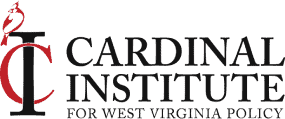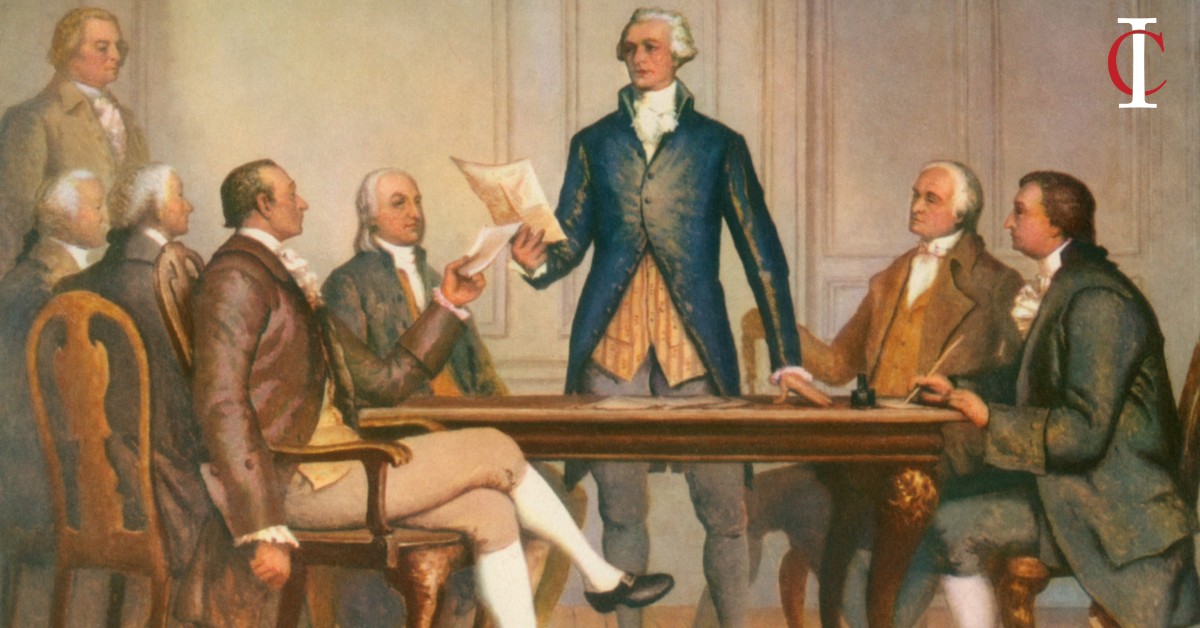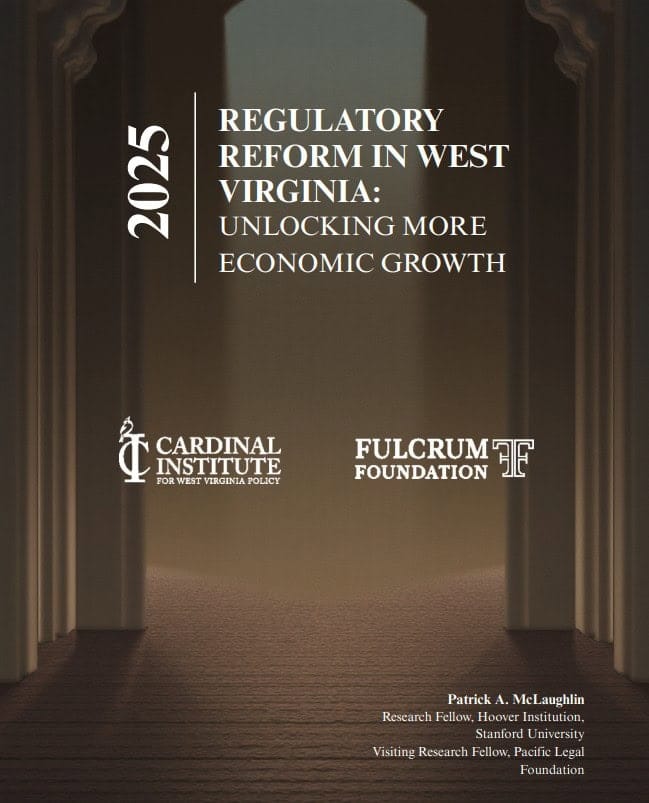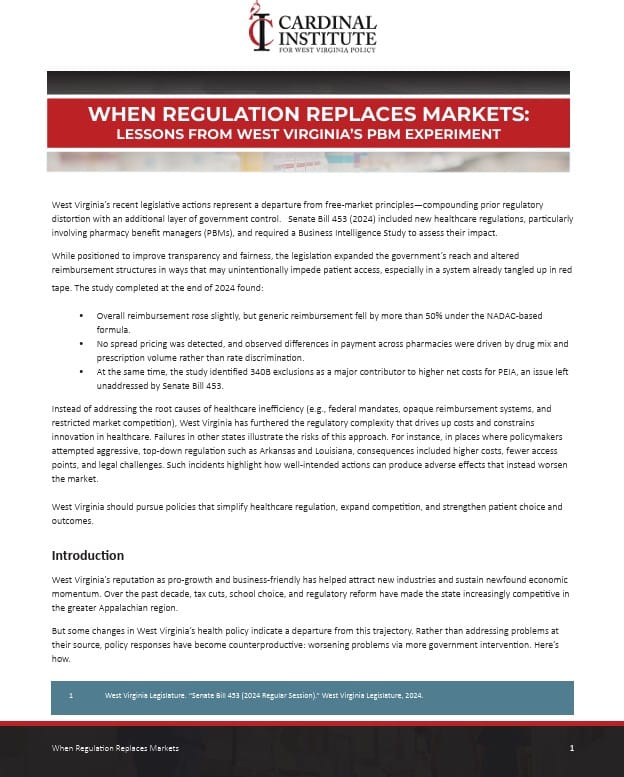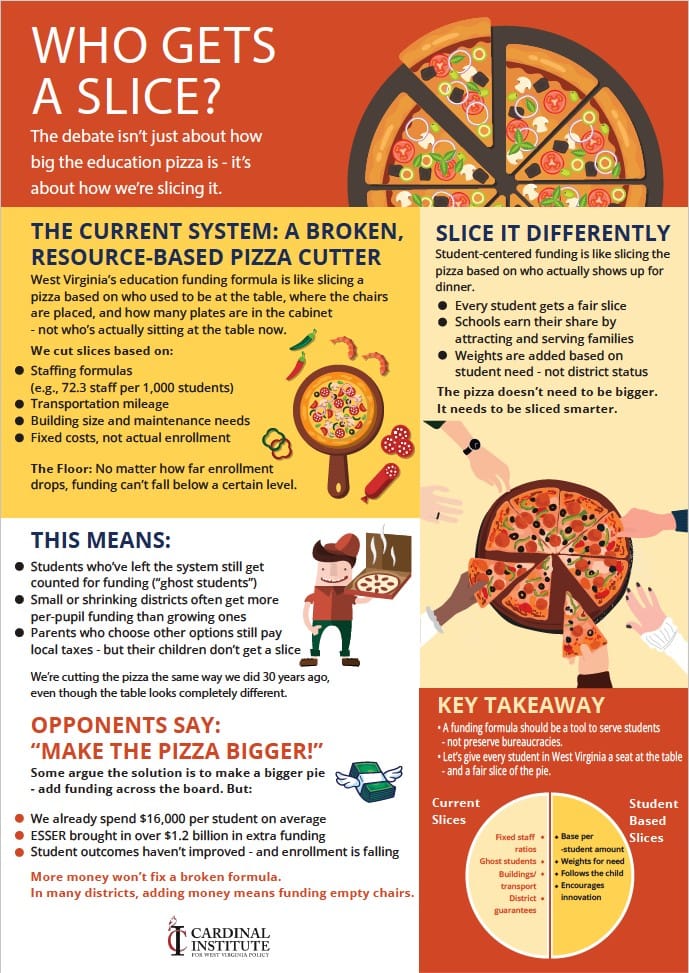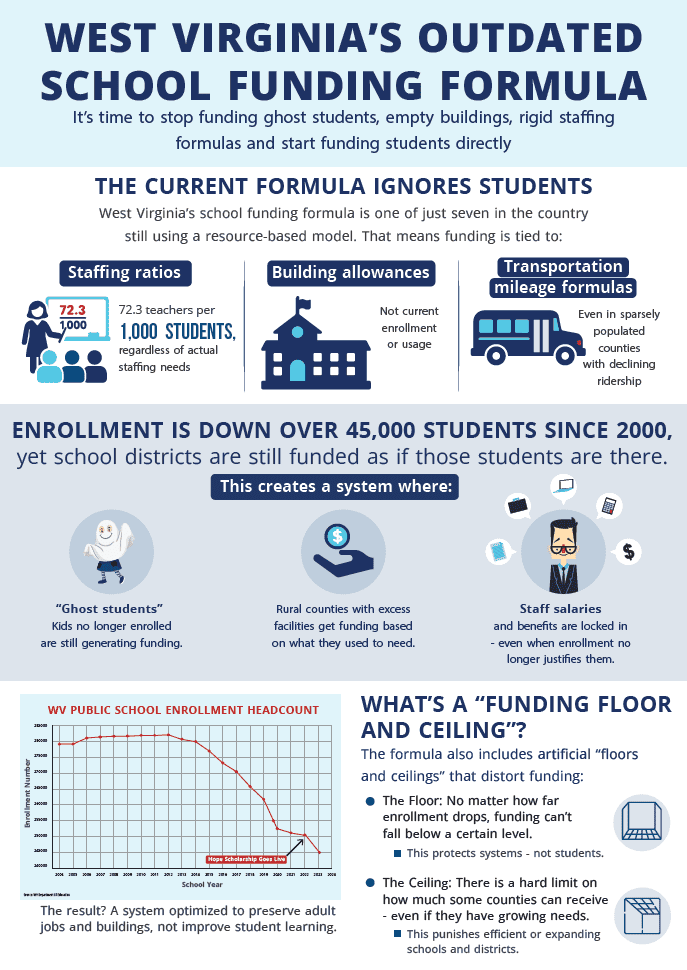
What The West Virginia Watch Gets Wrong About the Hope Scholarship & School Choice
Responding to The WV Watch
In a recent commentary piece, the WV Watch puts West Virginia’s Hope Scholarship squarely in its sights and holds no punches.
Here’s where they got it wrong.
Do the Math
The WV Watch claims that West Virginia’s schools need more money.
Like most states, West Virginia spends roughly half its total state budget on education and has very little to show for it. West Virginia’s performance on the National Assessment of Educational Progress (NAEP), also known as the Nation’s Report Card shows, the state performing abysmally.
NAEP Grade 4: Math proficiency 22%, Reading proficiency 22%
NAEP Grade 8: Math proficiency 15%, Reading Proficiency 22%
The claim here is that the schools are approaching a fiscal cliff, which is true. The WV Watch identifies two culprits in this. They are the end of the Elementary and Secondary School Emergency Relief (ESSER) funding, which was about $1.187 billion, and the Hope Scholarship, which is $27 million.
These are large sums to be certain, but what does it mean?
The three phases of ESSER funds were designated to pay for emergency items and cover down on learning losses. School districts were warned not to use the funding for items like salaries that would expand their overall recurring budgets and create fiscal cliffs. Some states heeded the warning and did this well, some did not. This is a billion-dollar surplus to the over $4 billion budget; this is like winning the lottery to the tune of a quarter of your income and then behaving as if that amount will magically become recurring.
Districts should have made better decisions about spending. It’s like building a household budget: sometimes something has to give. Everyone loves a family vacation, but if that means cutting back on things like milk and eggs, then the beach will have to wait.
The Hope Scholarship, however, was cautiously planned by building provisions that prevented it from overwhelming the budget. What is the impact of the totals? It’s not 25%. Let’s do the math:
That’s 27 million divided by 4 billion.
Carry the decimal two places.
That’s 0.6% of the entire budget.
Which is the real fiscal issue?
Define the Terms
Another error of the article is the claim that the Hope Scholarship is “an “education savings account program — also known as a school voucher program”.
These things differ fundamentally. A voucher is like a coupon. It’s used to move a student’s state funding to the school of their choice. Vouchers can only be spent on private schools and go directly from the government to the school. An Education Savings Account (ESA) can be used that way. However, it also allows parents to choose many other options. These include tutoring, home education, and special education services. An ESA is an account funded by state dollars but controlled by the parent or guardian of the eligible student. So, parents have more flexibility in how the funds are spent.
What’s worse is the author contradicts herself here. If the Hope Scholarship was a voucher, parents couldn’t use it to pay for any items she considers questionable. She calls out Arizona’s ESA for misuse. Even here, she needs more context. The Common Sense Institute of Arizona found the following:
Unemployment Insurance Improper Payment Rate 22%
National Medicaid Improper Payment Rate 16%
AZ SNAP Payment Error Rate 11%
AZ ESA Rate of Apparent Misuse 1%
In West Virginia, the treasurer produces annual reports on what was purchased. By tying the money to a marketplace and creating strict guidelines for reimbursement, they can track what is being purchased. Good luck finding an understandable breakdown of spending in public schools.
Economics 101
The author makes much of a school in Martinsburg that closed last year. She writes “More than $15,000 in Hope Scholarship funding went to a micro-school in Martinsburg where parents found students just hanging out and playing on their phones. The school shut down and paid the state back the Hope Scholarship money.”
Exactly! That is how we expect accountability to function. The parents, the ultimate arbiters of school success, realized something was amiss. They called attention to the issues, and the school closed within months, reimbursing parents their tuition. That’s what happens when the forces of the free market are allowed to work. Rather than a total monopoly where parents and students are trapped in failing public schools, ESAs allow for swift and decisive action on the part of the parents to enact change.
School Choice Calculus
Parents who want options outside of the public school must weigh and calculate the costs of switching. And often it’s more about their child not being bullied. Or students with disabilities not getting services. Or not dealing with the school’s focus on social justice over academics. When they make the decision to walk away, they leave two-thirds of their roughly $15,000 per pupil allotment behind when they leave, taking only the state contribution of just under $5,000. This is a salient point that The Watch leaves out of all their reporting on the Hope Scholarship.
If you have children, you know for sure this kind of decision is seldom about “just money.”
School choice cannot be boiled down to one variable, but West Virginia’s parents, who are taxpayers and voters, have made clear that they support it. That warrants an honest examination of the realities of accountability, both academic and fiscal, and the obstacles to receiving a quality education.
